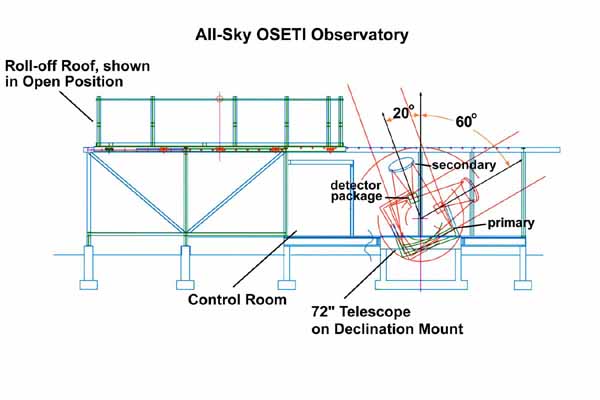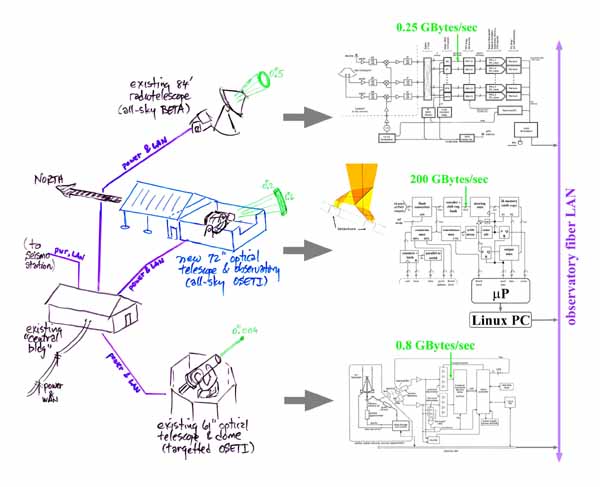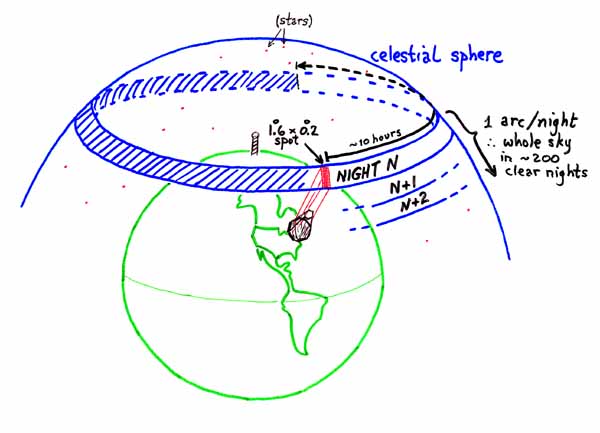All-Sky Search
We are embarking on a new all-sky optical search, sponsored by
The Planetary Society! It will use a 72" diameter glass "light
bucket", with a custom camera containing 1024 ultrafast detectors.
These will stare at a stripe of sky measuring 1.6 by 0.2 degrees;
all stars in this "declination stripe" will pass through our detector,
in review. It will take about 200 clear nights to survey the entire
sky visible from our site 40 miles west of Boston.
You can read the "technical paper" for lots more details.
But here are a few pictures showing what we are working on, and what's
been done so far:
The Observatory "Dome", with Its Rolloff Roof
Here's the new dome building, with rails so the roof can roll
to the north. The south wall rolls down so we can see stuff that's
farther south. The design is by Nate Hazen and Jim Oliver, with lots
of helpful input from Dennis diCicco and Alan MacRobert (Sky and Telescope
Magazine). (click on image to get a bigger photo)

Three SETI Projects at Agassiz Station
When the all-sky search is running we'll have three (count 'em) searches
at our observatory on Oak Ridge in Harvard, Massachusetts. Funding comes
from The Planetary Society and the Bosack/Kruger Charitable Foundation.
This figure shows the BETA microwave search (3 beams, and 250 million
radio channels, with the 84-foot steerable dish); the targetted optical
SETI (piggyback on the 61" optical telescope); and the new all-sky optical
SETI (with its dedicated dome and telescope).
(click on image to get a bigger photo)

How the All-Sky Search Works
The all-sky telescope stares at a stripe of sky, 1.6 by 0.2 degrees, with
an array of 1,024 ultrafast detectors. The earth's rotation carries the
celestial sphere (complete with its stars!) through that stripe; so in a
10-hour night we observe about 40% of the length of that stripe. Every
object within that arc is observed, with a dwell time of about a minute
(the time it takes to drift through 0.2 degrees).
We move the telescope once each day, to observe the next stripe; and we
complete the rest of these stripes later in the year, when the sun has
moved out of the way.



